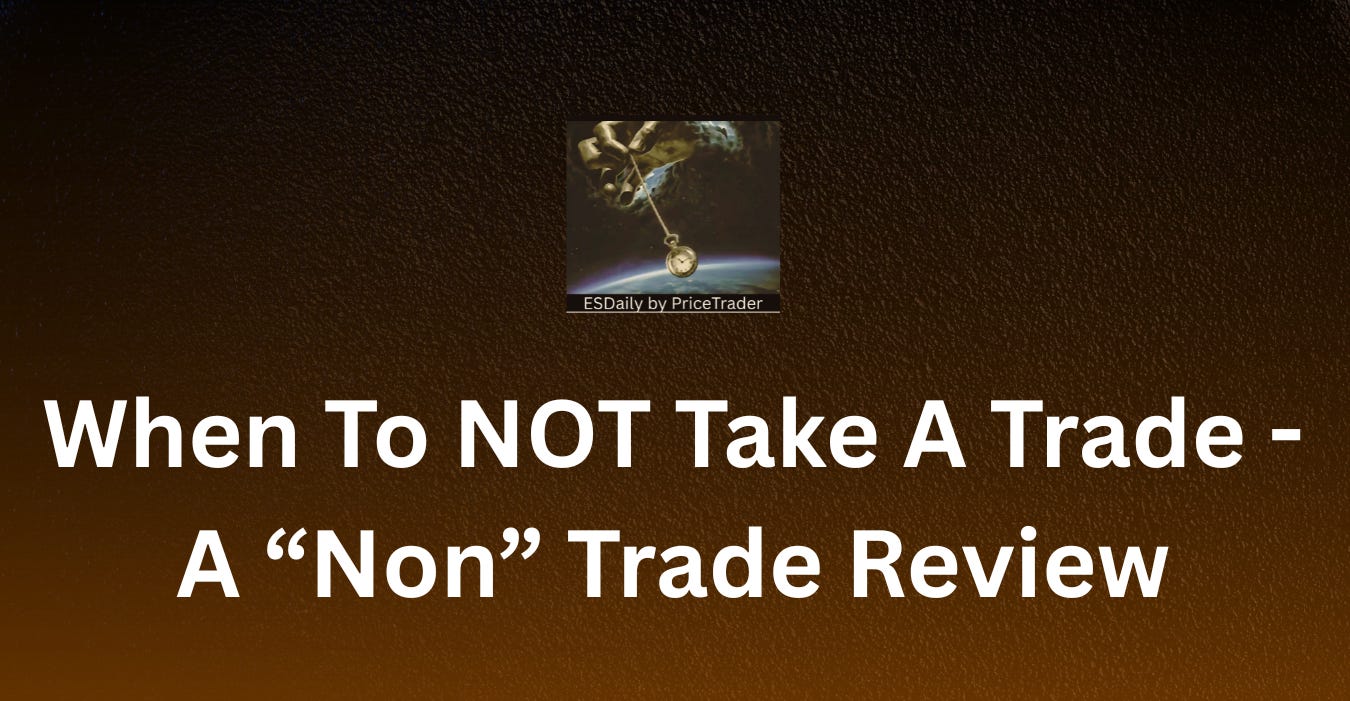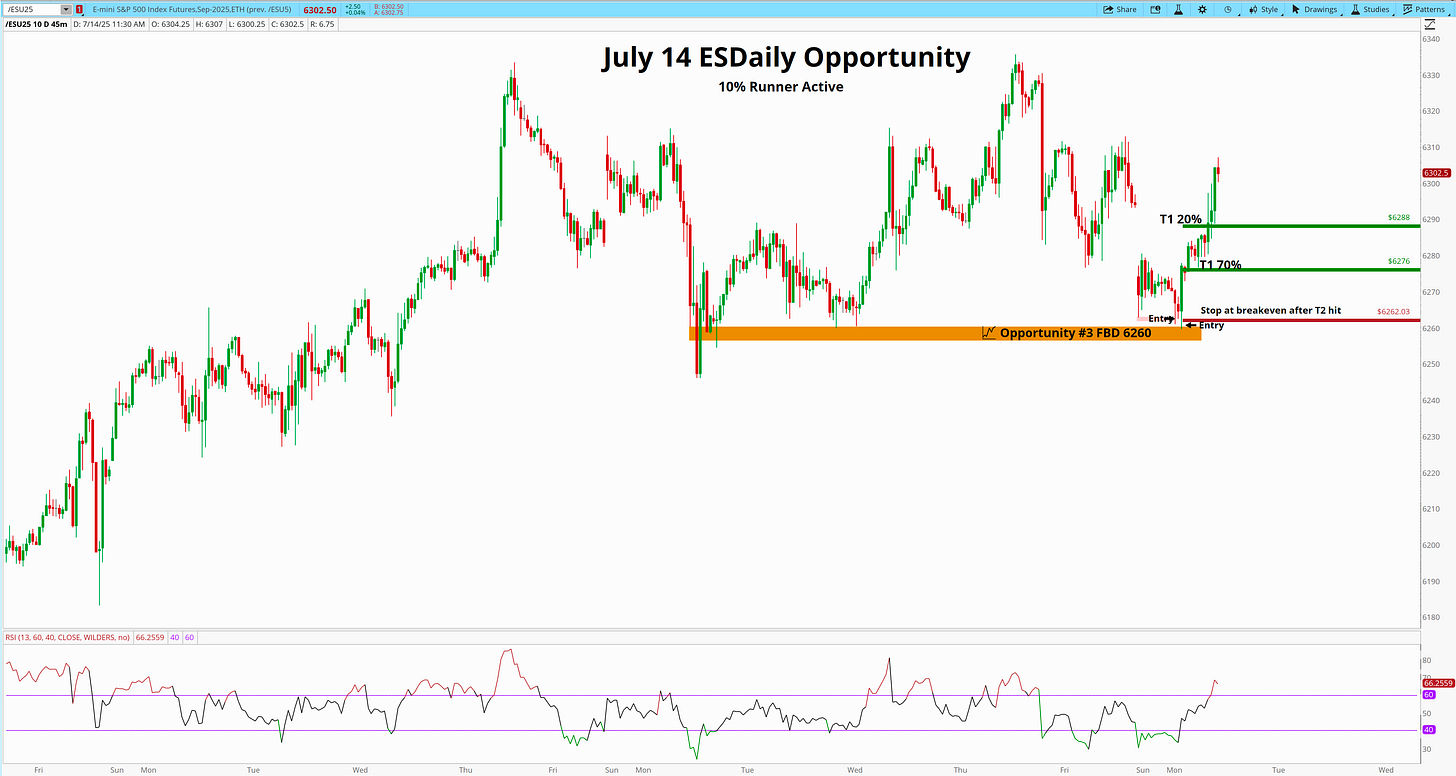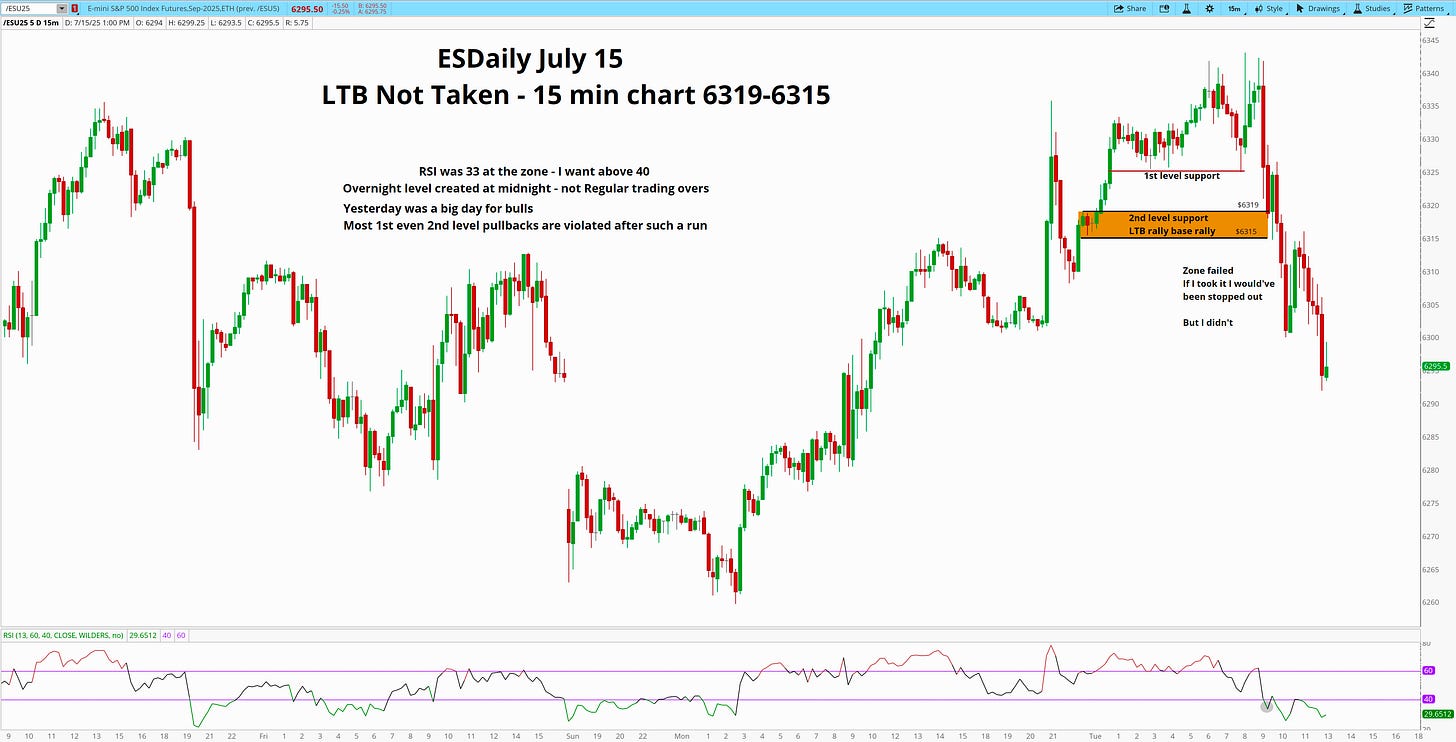When To Not Take A Trade - A "Non" Trade Review
Why I Skipped the 6319–6315 LTB Zone on July 15
In trading, doing nothing can often be the hardest — and wisest — move.
While most commentary focuses on entries and exits, the truth is: many of the biggest edge-preservers come from trades avoided.
July 15 offered one of those moments.
I Was Already Long From 6260
The day prior, on July 14, we caught a clean Failed Breakdown (FBD) off the 6260 level. That trade was shared with subs ahead of time, played out beautifully, hitting both targets. And I remained long coming into July 15.
Up more than 80pts at 8:30AM.
Here’s a chart for reference after T2 was hit:
So the priority was not to chase new trades impulsively — but to protect the integrity of the open long and only consider fresh setups if the quality was exceptional.
When scanning for opportunities I identified 6319-6315 as a 15 min demand zone, and I know thousands of other traders did as well.
By technical definitions, this looked like a textbook Level Track-Back (LTB) zone from the core strategy:
Built from a rally-base-rally on the 15-min chart
Lined up with structural support and recent intraday pivots
Was an opportunity to get long in an uptrend - this is prudent
Plenty of traders bought it.
I didn’t.
Here’s why:
1. RSI Was Below Threshold at Entry
The RSI at the zone was around 33 when price touched down — well below the 40+ I prefer for higher-confidence entries. I want to see evidence of supportive strength holding into the zone, not exhaustion.
2. Zone Was Formed Overnight, Not During RTH
This level was created at midnight, not during regular trading hours. Overnight zones — especially ahead of key events — tend to lack depth and are far more prone to breaking under pressure.
3. CPI = Fragile Low Timeframe Zones
July 15 was CPI release day, and while I don’t trade the actual number, I know volatility will pick up. That means many 15-minute zones are fragile, and overnight levels often fail. That context alone makes me cautious.
4. After a Big Move, Liquidity Seeks Often Violate First Supports
The 6260 trade had already rallied hard — a +70-point move. Historically, the first and sometimes even second level pullbacks after such a strong push get violated as price seeks liquidity and flushes weak hands.
This is the type of “structural trap” that hurts traders who treat every textbook zone the same.
I trust my process more than most.
This wasn't about hesitation or doubt. It was about process.
I’ve seen this play out countless times — attractive zones that break right after major moves or macro catalysts.
This is why I stayed flat and let other traders take it.
And when it failed?
That was confirmation enough.
That led to the 1st opportunity of the day - One where we took it live in the chat and secured T1.
Waiting for the best setups is better than forcing action.




